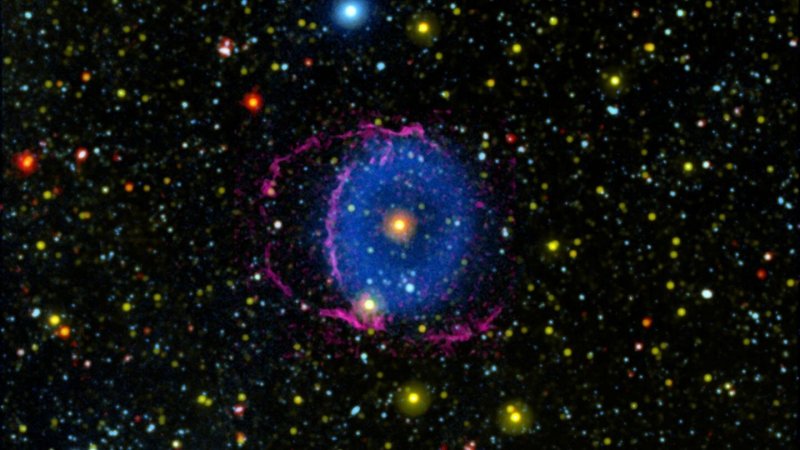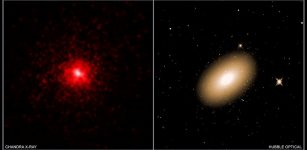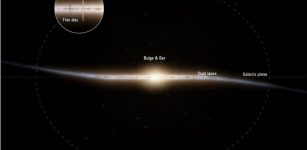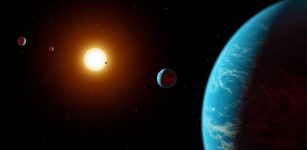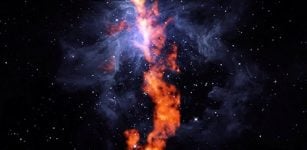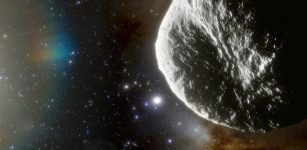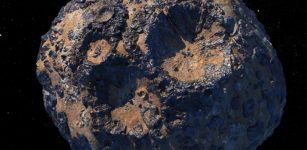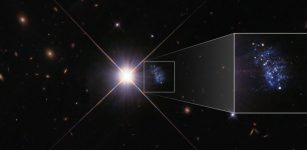Mysterious Asteroid Behind Mars Could Be Our Moon’s Long-Lost Twin
Eddie Gonzales Jr. – MessageToEagle.com – Astronomers have discovered an asteroid behind Mars that could be our Moon’s long-lost twin.
The asteroid has a composition very similar to the Moon and could be an ancient piece of debris, dating back to the gigantic impacts that formed the Moon and the other rocky planets in our solar system like Mars and the Earth.
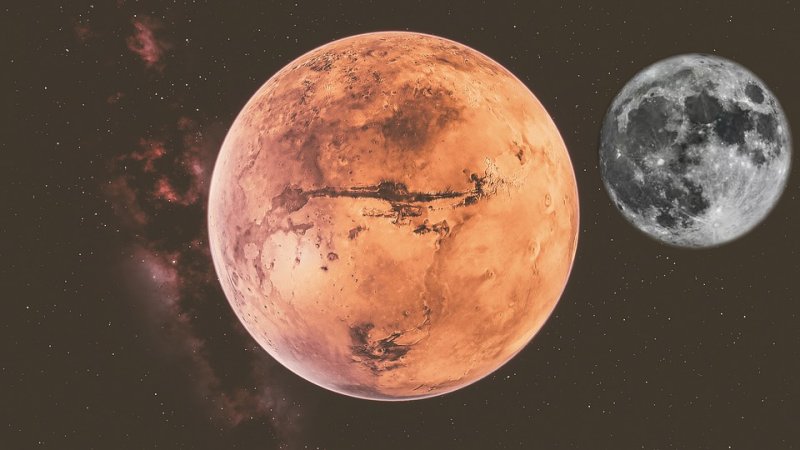
Credit: MessageToEagle.com
Trojans are a class of asteroid that follows the planets in their orbits as a flock of sheep might follow a shepherd, trapped within gravitational “safe havens” 60 degrees in front of, and behind, the planet.
Scientists find trojans very interesting because they represent leftover material from the formation and early evolution of the solar system.
Several thousands of those Trojans exist along the orbit of the giant planet Jupiter. Closer to the Sun, astronomers have so far discovered only a handful of Trojans of Mars, the planet next door to Earth.
An international team of astronomers from Italy, Bulgaria, and the U.S. has been studying the Trojans of Mars to understand what they tell us about the early history of the inner worlds of our solar system—the so-called terrestrial planets—but also to inform searches for Trojans of the Earth.
Searching For Trojans Of Mars
Ironically, it is much easier to find Trojans of Mars than for our own planet because these Earth Trojans, if they exist, sit always close to the Sun in the sky where it is difficult to point a telescope.
To find out the composition of the Mars Trojans, the team used X-SHOOTER, a spectrograph mounted on the European Southern Observatory 8-m Very Large Telescope (VLT) in Chile. X-SHOOTER looks at how the surface of the asteroid reflects sunlight of different colors—its reflectance spectrum.
One of the Trojans the team looked at was asteroid (101429) 1998 VF31.
Existing color data on the object suggested a composition similar to a common class of meteorites called ordinary chondrites. The light-collecting power of the VLT allowed to gather higher-quality data on this asteroid than ever before.
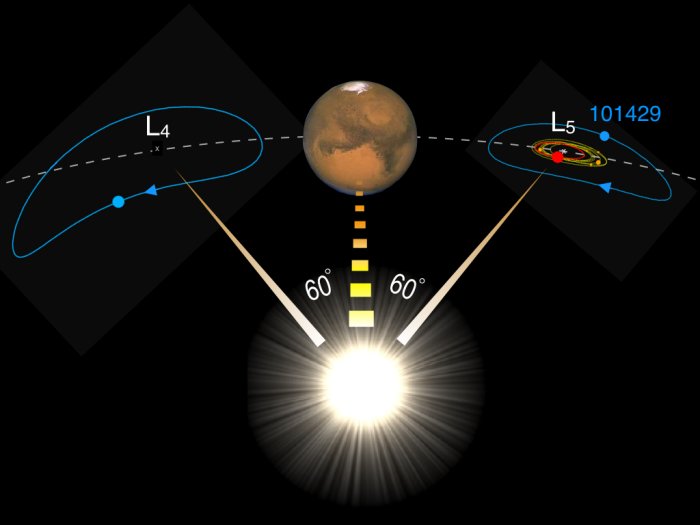
Depiction of the planet Mars and its retinue of Trojans circling around the L4 and L5 Lagrange points. The dashed curve traces the planet’s orbit. At L5, asteroid 101429 is represented by the blue point, the asteroid Eureka and its family are represented in red and amber respectively. Credit: AOP/Apostolos A.Christou
By combining these new measurements with data obtained previously at NASA’s Infrared Telescope Facility in Hawaii, the team then tried to classify 101429. They found that the spectrum did not match well with any particular type of meteorite or asteroid and, as a result, expanded their analysis to include spectra from other types of surfaces.
To their surprise, they found that the best spectral match was not with other small bodies but with our nearest neighbor, the Moon.
“Many of the spectra we have for asteroids are not very different from the moon but when you look closely there are important differences, for example the shape and depth of broad spectral absorptions at wavelengths of 1 and 2 microns. However, the spectrum of this particular asteroid seems to be almost a dead-ringer for parts of the moon where there is exposed bedrock such as crater interiors and mountains,” Dr. Galin Borisov, a PDRA at AOP said in a press statement.
Where Could Such An Unusual Object Have Come From?
One possibility is that 101429 is just another asteroid, similar perhaps to ordinary chondrite meteorites, that acquired its lunar-like appearance through eons of exposure to solar radiation, a process called space weathering.
Alternatively, the asteroid may look like the moon because it does come from the moon.
Dr. Apostolos Christou, AOP astronomer and lead author of the paper explains: “The early solar system was very different from the place we see today. The space between the newly-formed planets was full of debris and collisions were commonplace. Large asteroids—we call these planetesimals—were constantly hitting the moon and the other planets. A shard from such a collision could have reached the orbit of Mars when the planet was still forming and was trapped in its Trojan clouds.”
A third, and perhaps more likely scenario is that the object came from Mars itself.
As Dr. Christou points out, “The shape of the 101429 spectrum tells us that it is rich in pyroxene, a mineral found in the outer layer or crust of planet-sized bodies. Mars, like the moon and the Earth, was pummeled by impacts early in its history, one of these was responsible for the gigantic Borealis basin, a crater as wide as the planet itself. Such a colossal impact could easily have sent 101429 on its way to the planet’s L5 Lagrangian point.” Indeed, a Mars origin was proposed a few years ago for 101429’s Trojan siblings, a cluster of Trojans collectively known as the Eureka family.
These asteroids also have an unusual composition but, whereas 101429 is pyroxene-rich these Eureka family asteroids are mostly olivine, a mineral found deep in a planetary mantle.
101429 and its brethren also have something to teach us about finding the Earth Trojans, if they exist.
If the Earth Trojans are anything like Mars’s, the same mechanism would act as a source of small near-Earth asteroids that will stand out because of their uncommon composition.
Written by Eddie Gonzales Jr. – MessageToEagle.com Staff

